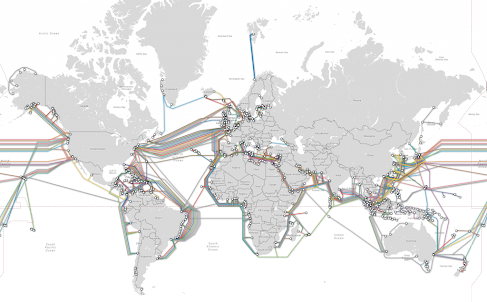When I recently first moved into my office, I went through my various internet options. Fibre, cable, ADSL. Fibre was unfortunately not an option so that left cable vs ADSL. As I begun to look at the expected speeds, I tested something leftfield – hotspotting off my iphone… I have full bar 4G reception & low & behold – 22MBs! I used it for a day & had consistent speeds. A simple $20 upgrade to my monthly bill & I was sorted.
This got me thinking, how far are we off running everything off wireless? To begin to answer this question, let’s begin with a crash course in internet infrastructure & it may surprise quite a few.
In 1850, the first underwater copper cable test was undertaken across the English channel. A simple cable setup dropped into the channel via tugboat. It failed but by WW1, connections across the globe were in place and operational, albeit not optimal & primarily for military & government reasons. Telephony technology accelerated the need for strong networks & by the 50’s families could phone most international cities using the coloured plastic dial phones that anyone over the age of 35 grew up with. First with attendants at the exchanges & then later automated.
Fast forward to the late 70s & optic fibre technology is invented, a game changer & a big contribution to the information age. Super fast, low loss, & low interference the optic fibre cables are over 20 times faster than the best copper. With the invention of the worldwide internet in 1989, suddenly there is a need for the submarine network to be upgraded. The telcos primarily win this race. Modern underwater cables are quite the piece of engineering. Optic, surrounded by silicone, sheathed by copper, polyethylene, and then armour. These are now draped, surveyed and monitored across most of our oceans. Over 98% of the internet’s data runs through this network.
At the same time, wireless & satellite technologies have also developed. There are 2 primary networks, the first being mobile phone networks that transmit back to local towers and back into the cable network. The second being geostationary satellites which operate 35,000km above us in orbit and effectively remain in place in the sky. Unfortunately, the orbit distances pose speed and delay issues, as need direct line of sight and as such is primarily used for remote activities and remote safety. There are also 2 “low orbit” networks that have been in use since the late 90’s but in reality, the satellites have not been upgraded since launch & as such they do not offer much more than the geostationary ones.
This, however, looks set to change. Space X, the privately owned Elon Musk brainchild, just recently, launched a few test satellites into orbit. The “Starlink” plan in the long term is to have over 12,000 very low orbit satellites (orbiting 625km above the ground) that can effectively cover the entire planet with superfast (1Gb/s) & strong coverage. There are challenges, however. Due to their altitude, they will constantly be in flux over the earth as they orbit every few hours resulting is some pretty chunky algorithms to ensure that billions of users’ signals don’t constantly drop out. There are also political challenges as services & satellites cross various and numerous jurisdictions. Never the less Space X is targeting a mid-2020’s operational service. Exciting times.





